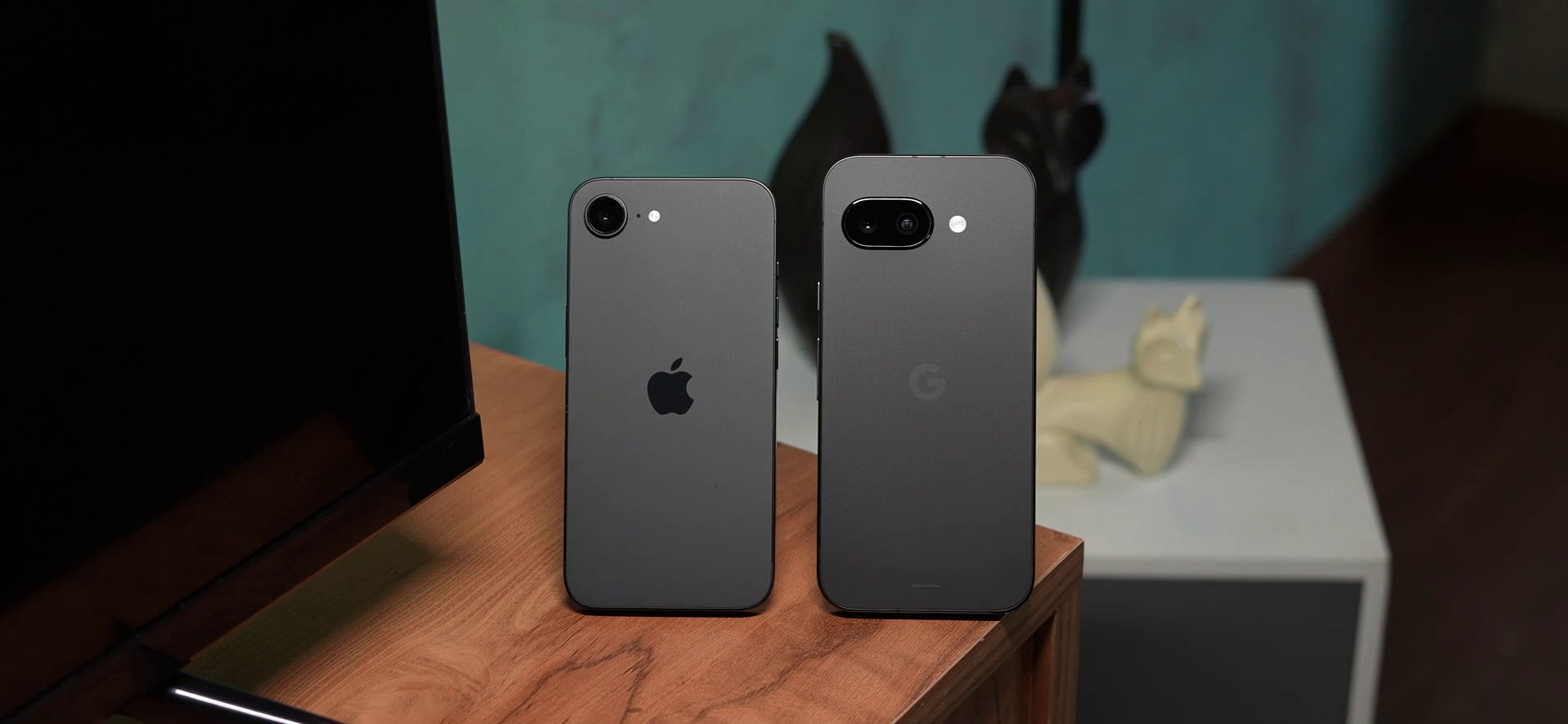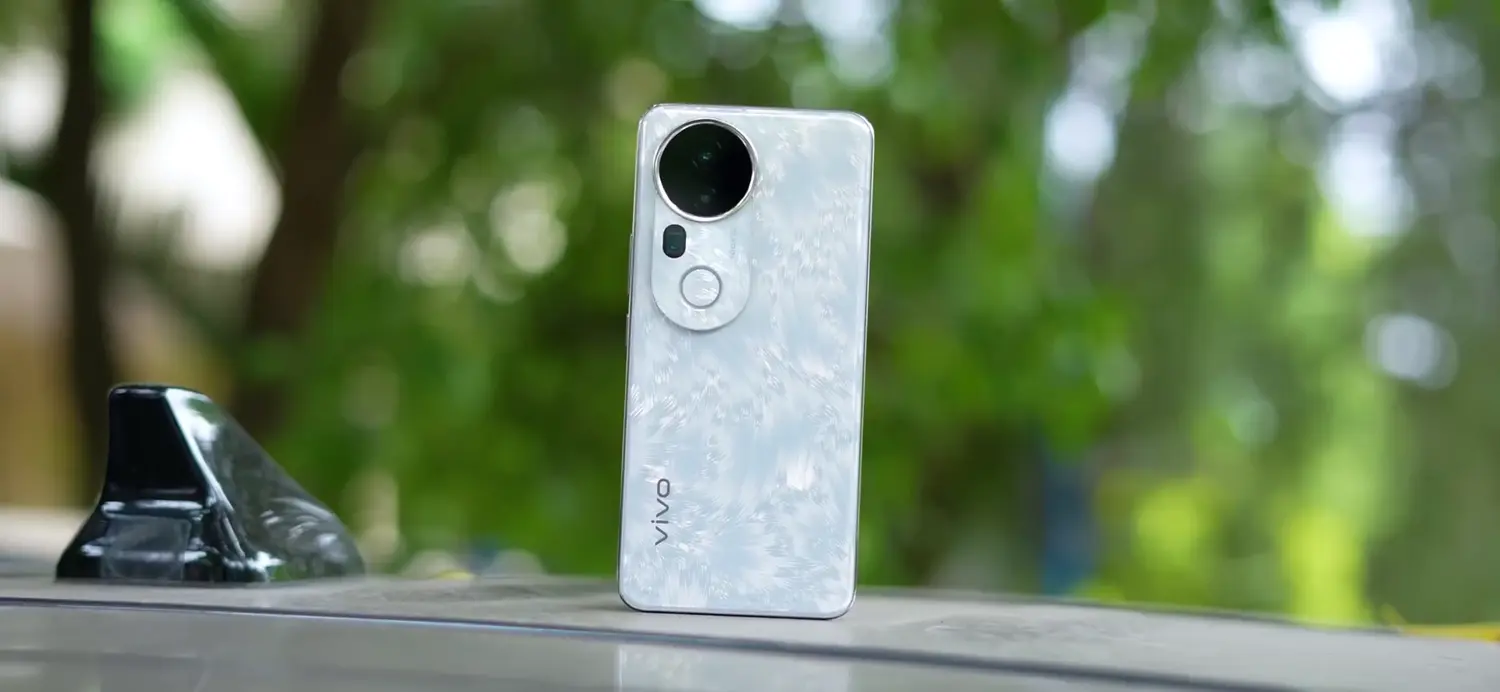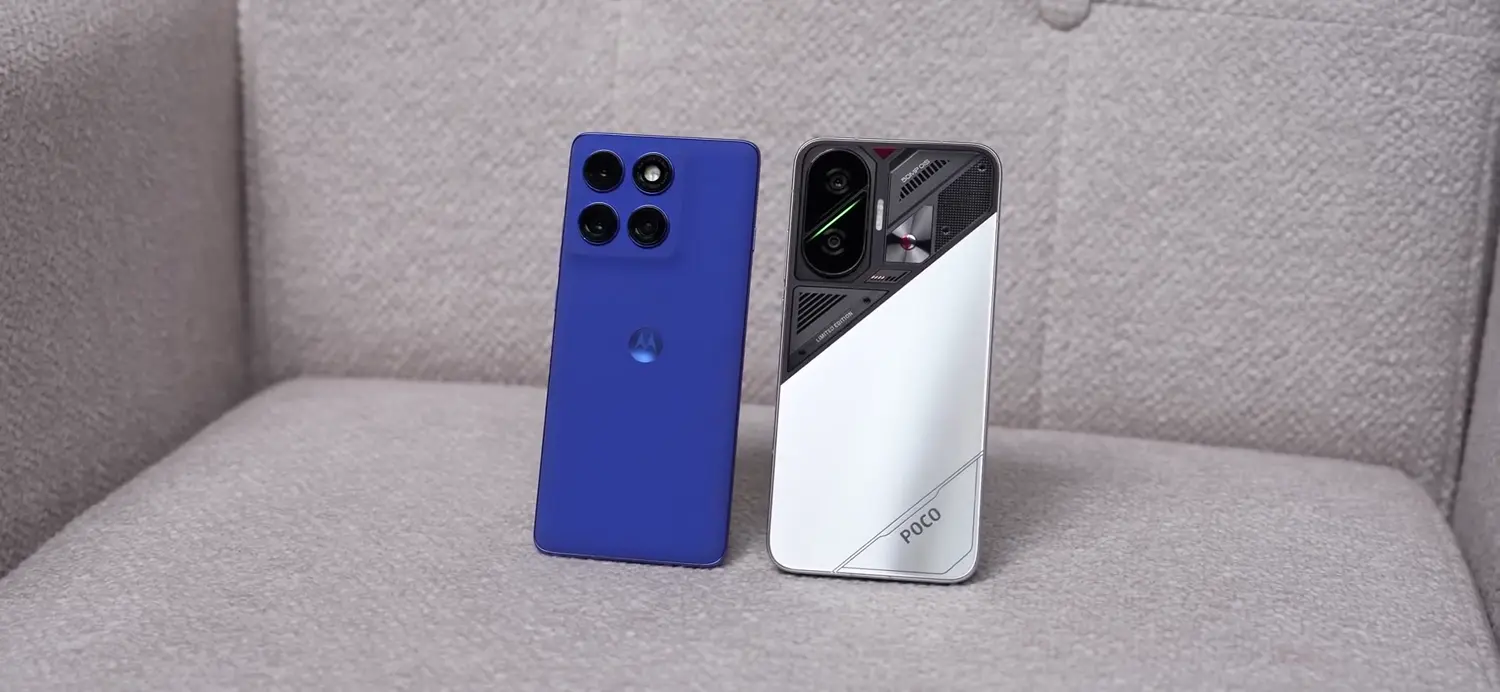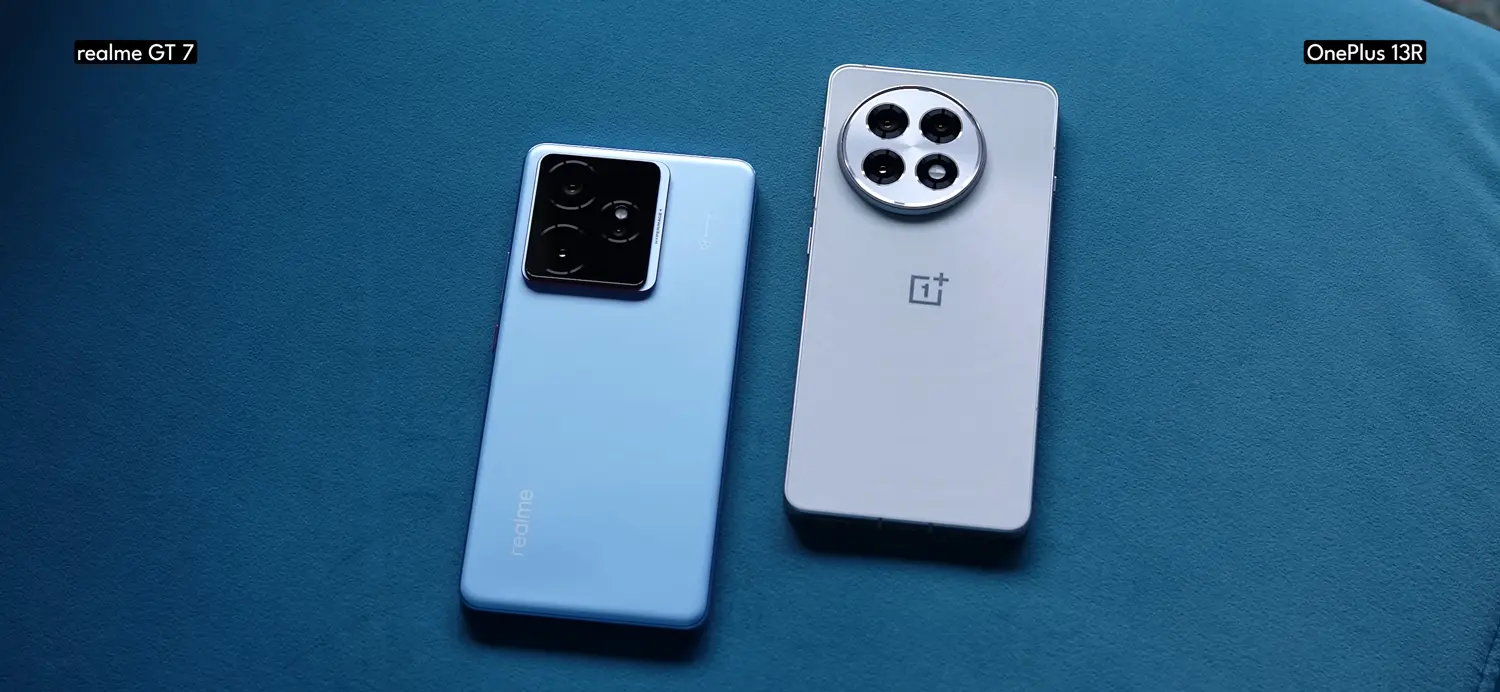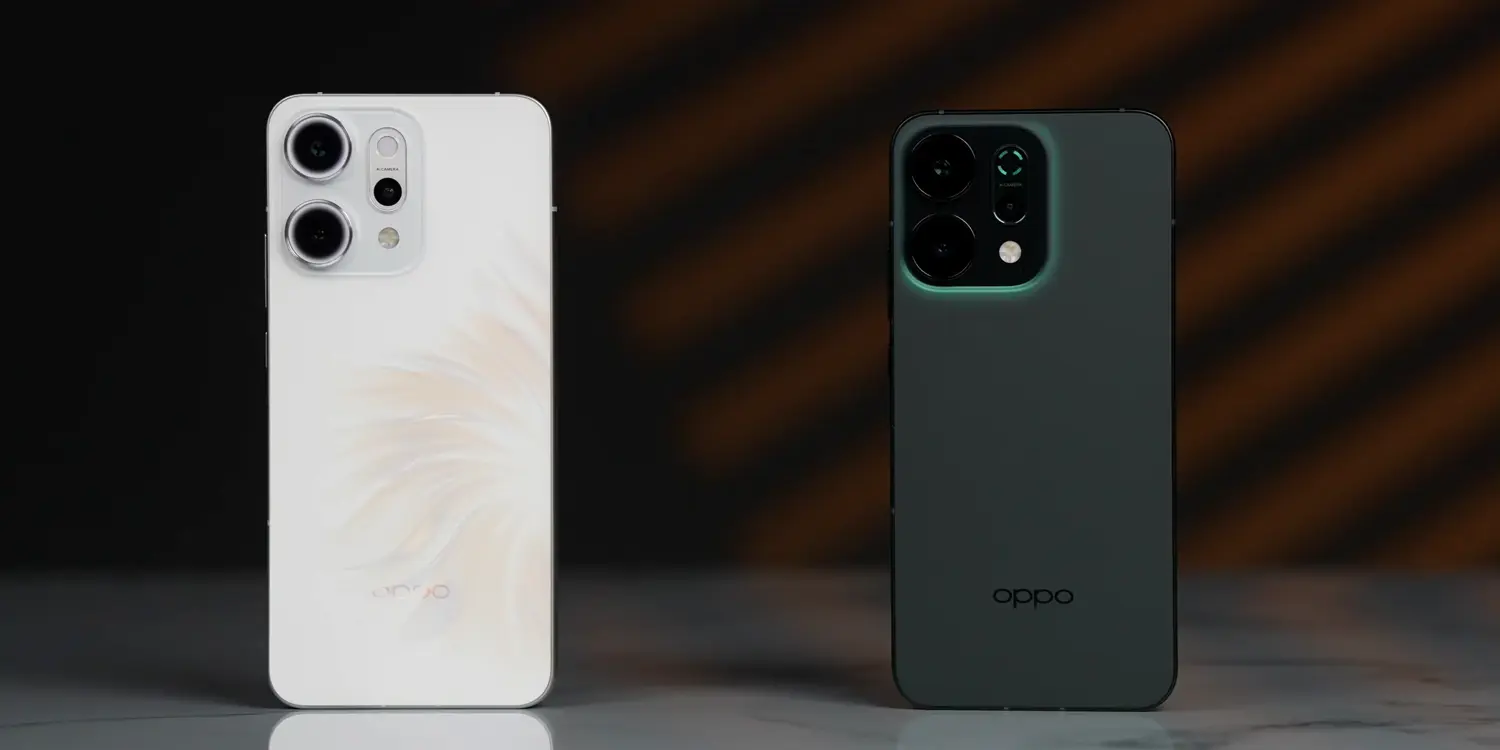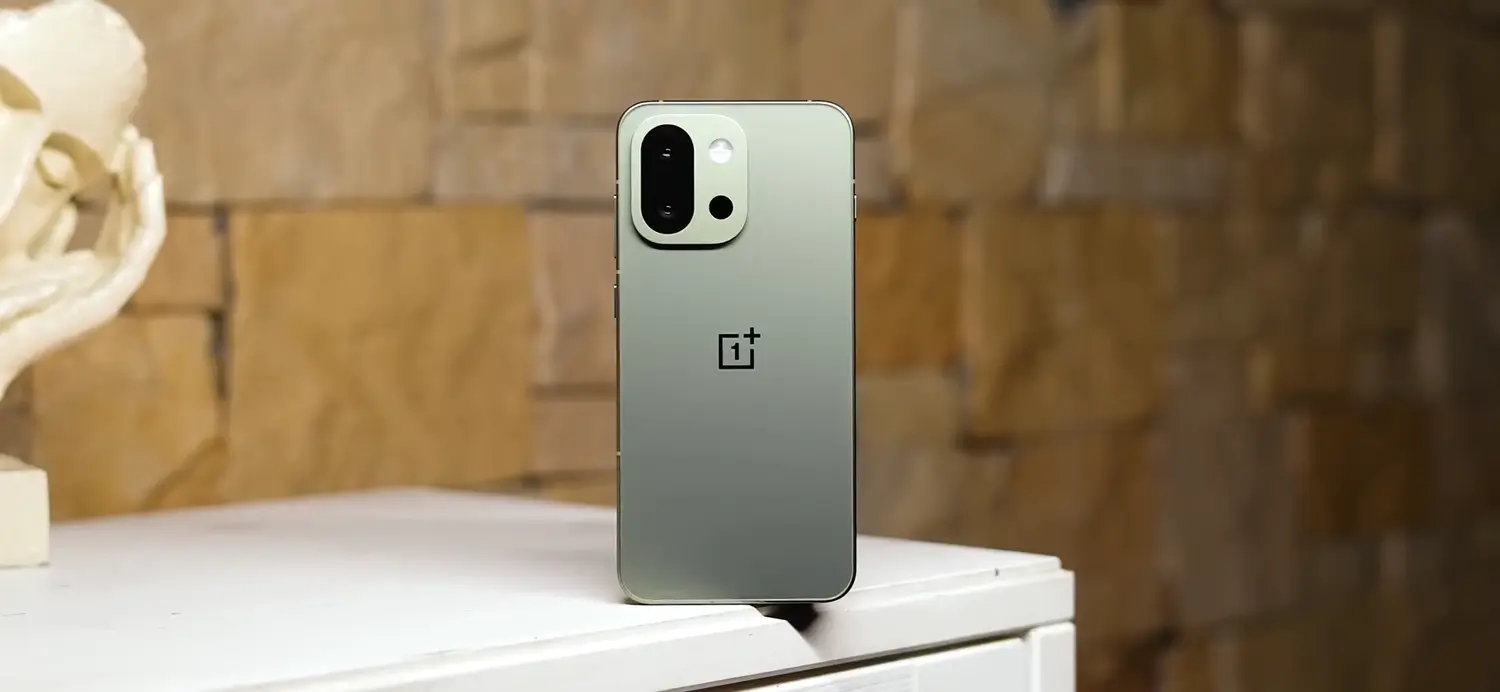Choosing a smartphone can be overwhelming, especially when you’re looking at compact flagships like the iPhone 16e and Google Pixel 9a. Both phones pack premium features into a smaller size, but each has its own pros and cons. If you’re wondering which one is worth your money, this article will break it down in a simple, easy-to-understand way. We’ll cover design, display, performance, cameras, battery, and more to help you decide. By the end, you’ll know which phone suits your needs best.
Design and Build Quality
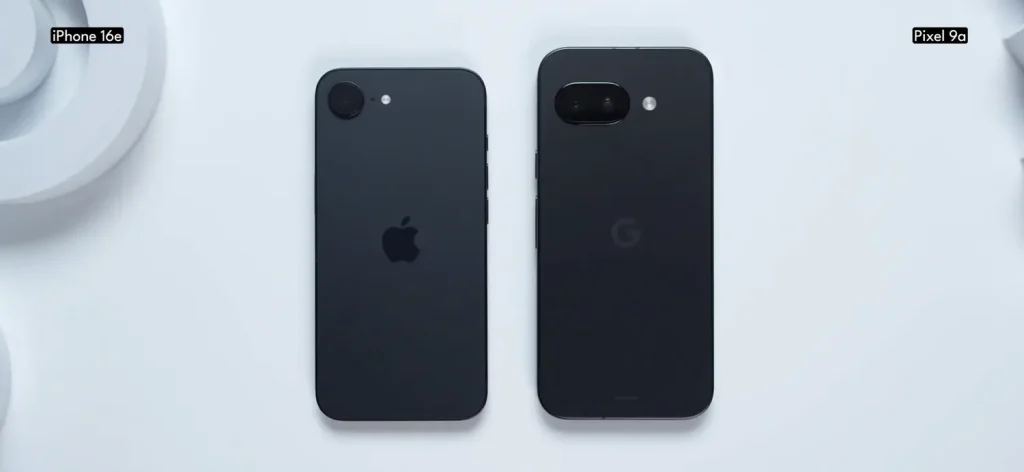
Both the iPhone 16e and Pixel 9a are compact, making them super comfortable to hold and use with one hand. They’re almost the same size as their bigger counterparts, the iPhone 16 and Pixel 9, but there are key differences in their build and feel.
The iPhone 16e sports a premium glass sandwich design with a metal frame, giving it a luxurious feel. It uses Ceramic Shield on the front for better durability, but the back is regular glass, unlike the iPhone 16, which has Ceramic Shield on both sides. Still, the iPhone 16e feels solid and high-end when you hold it. It’s also lighter and slimmer than the Pixel 9a, making it easier to carry in your pocket.
The Pixel 9a, on the other hand, uses a plastic back with a metal frame, which feels less premium in 2025. Plastic is a bit of a letdown when you’re paying for a flagship phone, and Google could’ve used better materials. The camera placement on the Pixel 9a also looks a bit odd compared to the iPhone’s neat, symmetrical design. Both phones have a flat back, which is nice for comfort.
Both come with IP68 water and dust resistance and support wireless charging, which are great flagship features. However, the Pixel 9a uses outdated Gorilla Glass 3 for its display, while the iPhone 16e’s Ceramic Shield offers better protection.
Verdict: The iPhone 16e wins for its premium materials and lighter design, but the Pixel 9a is still practical with its flat design.
Display Quality
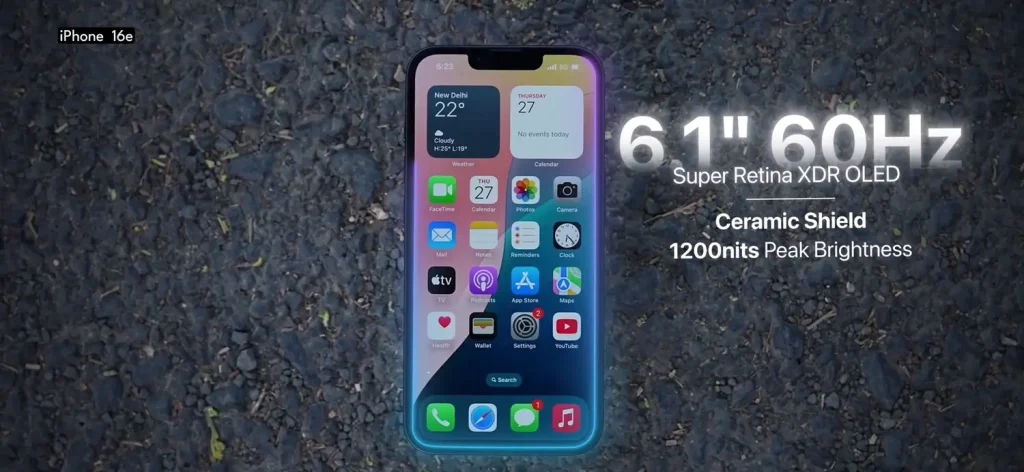
The display is a big factor when choosing a phone, and here, the Pixel 9a takes the lead. The iPhone 16e uses a 60Hz panel, the same one from the iPhone 13 launched in 2021, which feels outdated in 2025. It also has a notch, which looks old and takes up screen space. The brightness on the iPhone 16e is decent but not great, especially for HDR content or outdoor use.
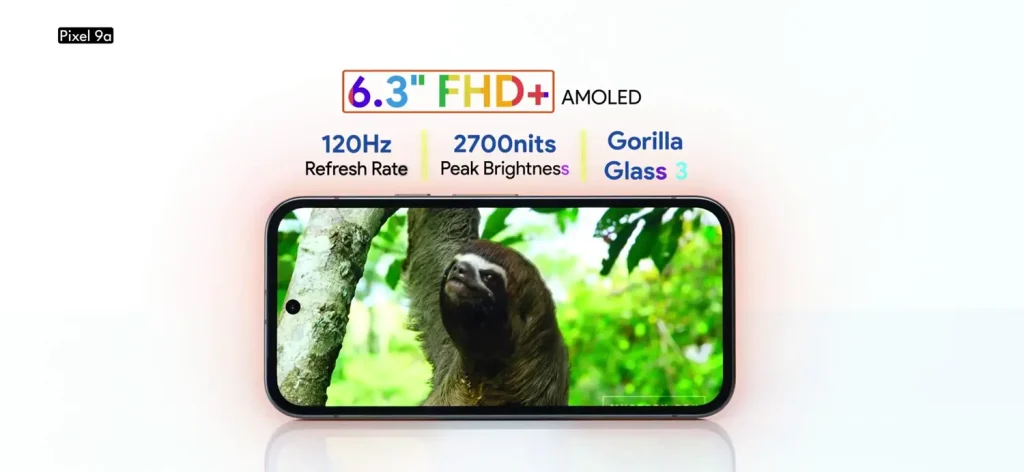
The Pixel 9a, however, comes with a 120Hz display, making scrolling and animations much smoother. It’s also brighter, both for regular use and when watching HDR content on apps like YouTube or Netflix. This makes the Pixel’s display pop more, especially outdoors. One thing to note: out of the box, the Pixel 9a is set to 60Hz, so you’ll need to switch to 120Hz in settings for the best experience.
Both phones have well-tuned displays with accurate colors, so you won’t notice much difference in color quality. But the Pixel 9a’s higher refresh rate and brightness make it better for watching videos and daily use.
Verdict: The Pixel 9a’s 120Hz display and better brightness make it the clear winner, while the iPhone 16e’s 60Hz panel feels behind the times.
Performance and Software
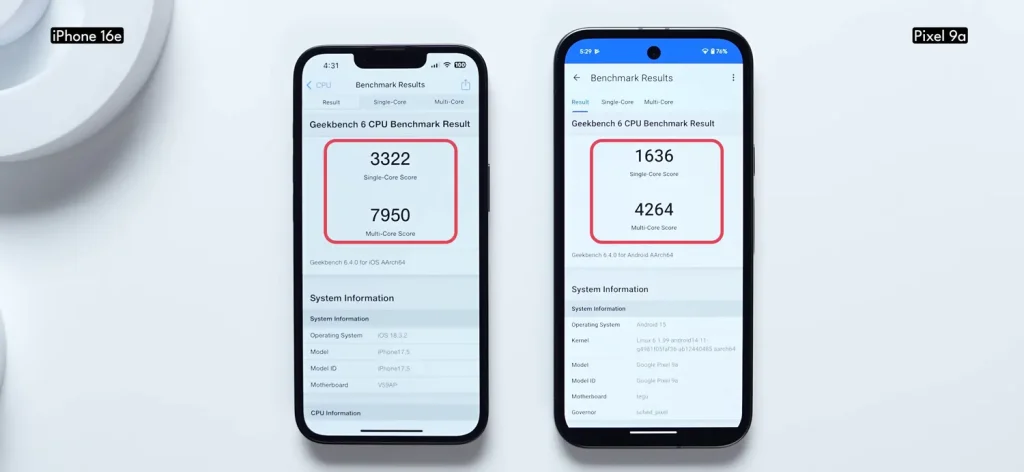
Performance is where the iPhone 16e really shines. It’s powered by the A18 chip (with one less GPU core than the iPhone 16), which is much faster than the Pixel 9a’s Tensor G4 chip. In benchmarks like Geekbench and 3DMark, the iPhone 16e beats the Pixel 9a in single-core, multi-core, and GPU tests. For gaming, the iPhone handles heavy titles like Genshin Impact much better, delivering close to 60 FPS, while the Pixel 9a struggles to hit 40 FPS.
The iPhone 16e also supports games like Assassin’s Creed Mirage and Resident Evil Village, which the Pixel 9a can’t run due to its weaker chip. The A18’s efficiency also gives the iPhone slightly better battery life, even though the Pixel 9a has a larger battery. That said, if you set the Pixel 9a to 60Hz, its battery life can match the iPhone’s.
Both phones have 8GB of RAM, but the iPhone 16e comes with 128GB of storage, while the Pixel 9a offers 256GB, which is a better deal. The Pixel uses faster LPDDR5X RAM and UFS 3.1 storage, but in daily use, the iPhone feels snappier.
Software-wise, the iPhone 16e runs iOS 18, and the Pixel 9a runs Android 15 with Pixel UI. Both offer a smooth, premium experience with 6-7 years of updates. The iPhone 16e includes Apple Intelligence features like enhanced Siri, writing tools, image editing, and ChatGPT integration. The Pixel 9a offers Google’s AI features like Circle to Search, Magic Eraser, and Pixel Studio, but misses out on some features like Call Notes, which is strange since it uses the same chip as the Pixel 9.
Verdict: The iPhone 16e dominates in performance, but the Pixel 9a offers more storage and a solid software experience with unique AI features.
Camera Performance
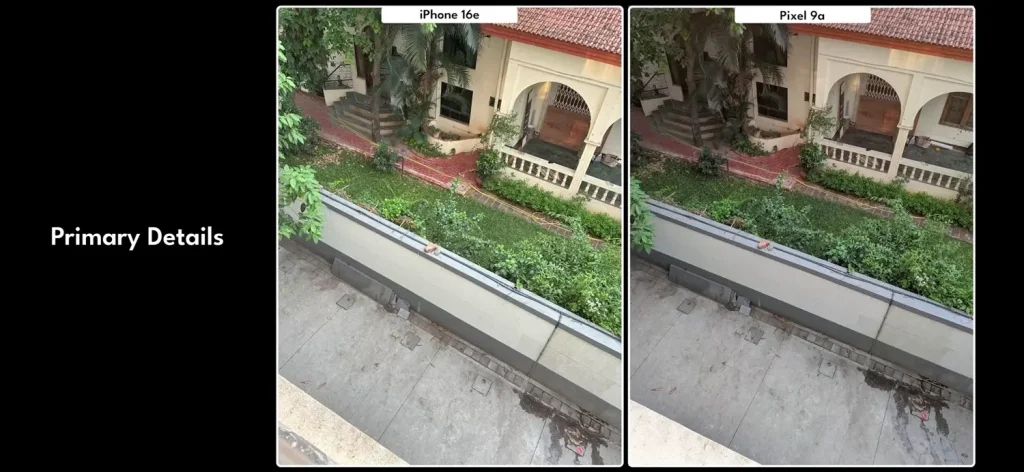
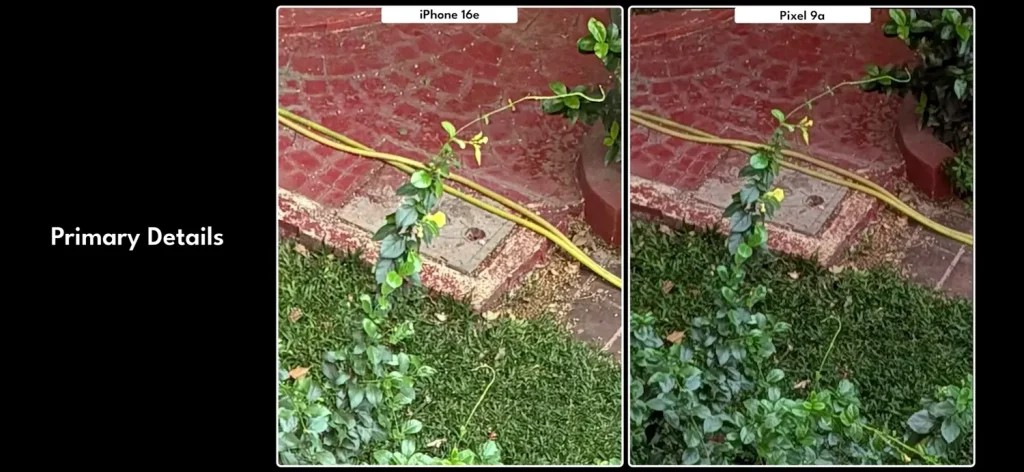
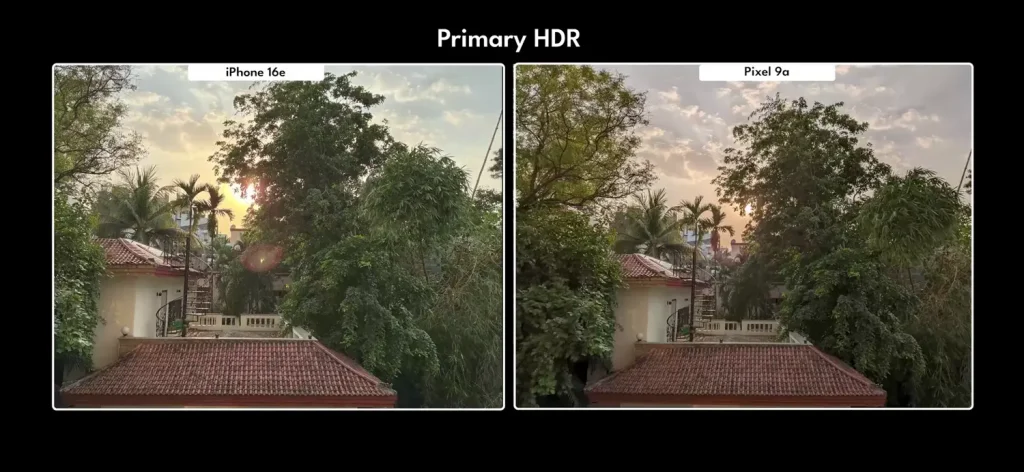
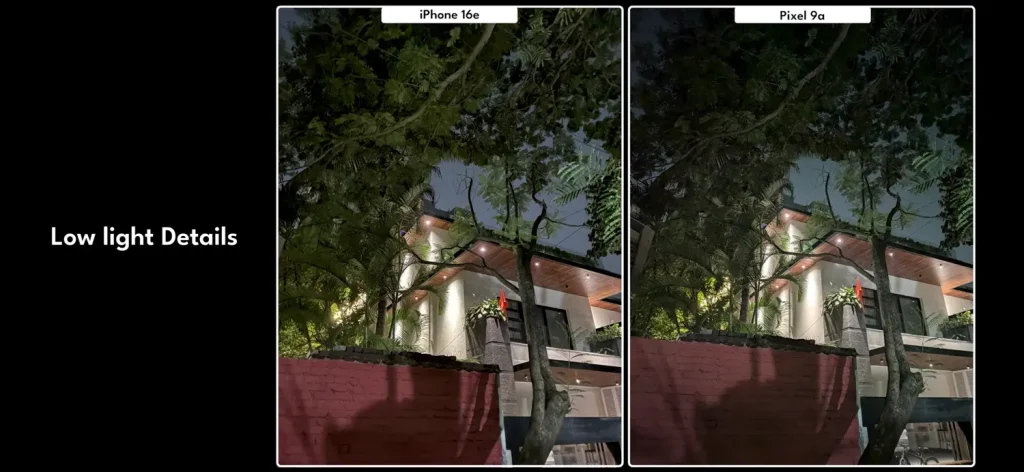
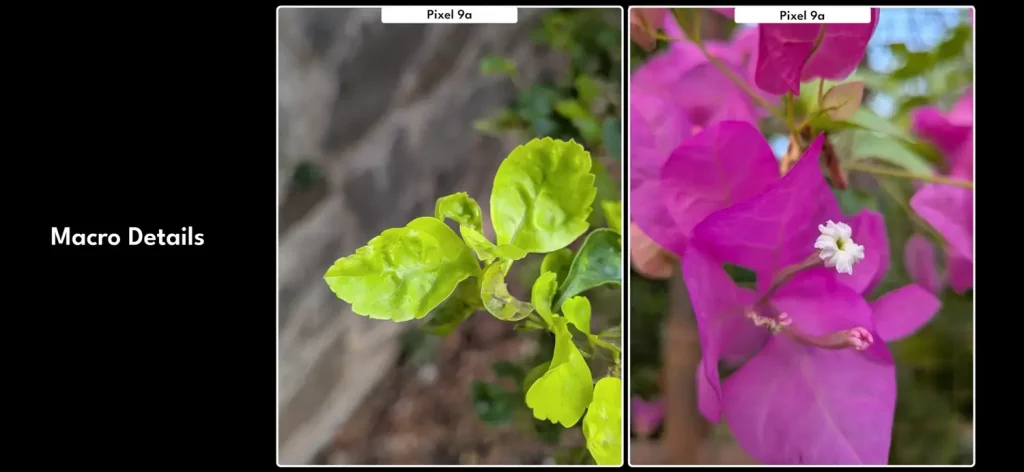
Cameras are a big deal for most buyers, and the Pixel 9a has an edge with its dual-camera setup (primary + ultra-wide) compared to the iPhone 16e’s single rear camera. It’s surprising that Apple still ships a phone with just one camera in 2025, as it limits versatility.
The iPhone 16e’s 24MP primary camera captures sharper details and better textures than the Pixel 9a’s 12MP sensor, especially in 2x and 4x zoom shots. However, the Pixel’s ultra-wide camera makes it more versatile for landscapes or group photos. The Pixel also handles HDR better by preserving highlights, but it tends to crush shadows. The iPhone 16e has better overall HDR tuning.
For portraits, the iPhone 16e does a better job with edge detection and natural skin tones, while the Pixel 9a struggles with reddish skin tones. In low light, the iPhone 16e surprisingly outperforms the Pixel 9a, capturing brighter and sharper shots despite its smaller sensor. Selfies are also better on the iPhone, with more natural skin tones and better dynamic range.
For videos, both phones shoot 4K 60 FPS with the primary camera, but the iPhone 16e has a slight edge in detail and audio quality. The iPhone can also shoot 4K 60 FPS selfies, while the Pixel 9a is limited to 4K 30 FPS. The Pixel’s ultra-wide camera can shoot 4K 30 FPS, which is a plus.
Verdict: The Pixel 9a is more versatile with its dual cameras, but the iPhone 16e takes better photos and videos in most cases.
Battery and Charging
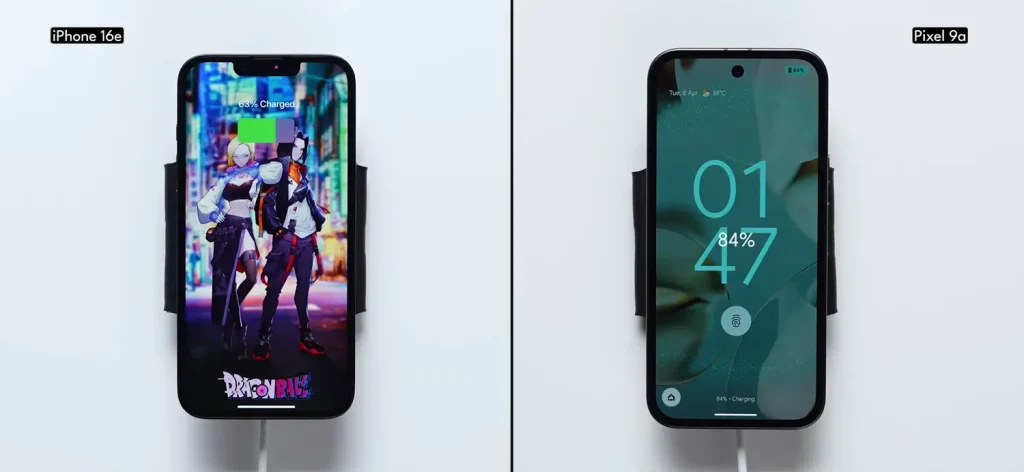
Battery life is solid on both phones, but the iPhone 16e has a slight edge due to the efficient A18 chip and C1 modem. The Pixel 9a has a larger battery, but its Tensor G4 chip is less efficient. If you set the Pixel 9a to 60Hz, its battery life can match the iPhone’s.
Charging speeds are slow on both phones, which is a letdown for flagships. The iPhone 16e charges slightly faster than the Pixel 9a, but neither will wow you with charging speed.
Verdict: The iPhone 16e wins for battery efficiency, but the Pixel 9a can keep up with some tweaks.
Additional Features
Both phones have flagship-grade speakers, but the iPhone 16e is slightly louder with better sound quality. Haptic feedback is excellent on both, though the Pixel 9a’s feels a bit more refined. The Pixel 9a has a fast in-display fingerprint scanner, while the iPhone 16e uses Face ID. The Pixel also supports high-res Bluetooth codecs like LDAC, which the iPhone lacks.
Specification Table
| Feature | iPhone 16e | Google Pixel 9a |
|---|---|---|
| Display | 60Hz, Ceramic Shield | 120Hz, Gorilla Glass 3 |
| Processor | A18 (1 less GPU core) | Tensor G4 |
| RAM | 8GB | 8GB LPDDR5X |
| Storage | 128GB | 256GB UFS 3.1 |
| Rear Cameras | 24MP (Primary) | 12MP (Primary) + 13MP (Ultra-wide) |
| Front Camera | Yes (4K 60 FPS) | Yes (4K 30 FPS) |
| Battery | Smaller, efficient | Larger, less efficient |
| Charging | Faster (slow overall) | Slower |
| Software | iOS 18 | Android 15 |
| Build | Glass + Metal | Plastic + Metal |
| Water Resistance | IP68 | IP68 |
| Wireless Charging | Yes | Yes |
Is It Worth It?
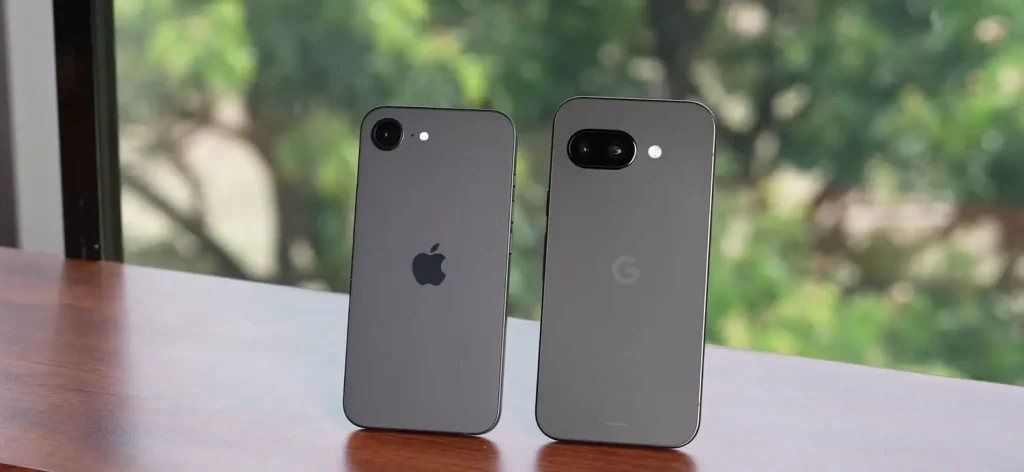
So, should you buy the iPhone 16e or the Pixel 9a? It depends on what matters most to you. The iPhone 16e is the better choice if you want a premium build, top-notch performance, and a reliable camera for photos and videos. Its integration with Apple’s ecosystem and long software support make it great for those already using Apple products like a Mac or iPad.
The Pixel 9a, however, offers better value with 256GB of storage at a lower price. Its 120Hz display and dual-camera setup make it more versatile for watching videos and taking different kinds of photos. If you prefer Android’s flexibility and Google’s AI features, the Pixel 9a is a strong option.
Final Verdict: The iPhone 16e edges out slightly due to its superior performance, premium build, and consistent camera quality. But if you want a smoother display, more storage, and extra camera versatility for less money, the Pixel 9a is a fantastic choice. Both phones are great, but the iPhone 16e feels like the safer bet for most users.
Whether you’re a student, professional, or just looking for a compact flagship, both the iPhone 16e and Pixel 9a have a lot to offer. Choose based on your budget, ecosystem preference, and what features you value most!
